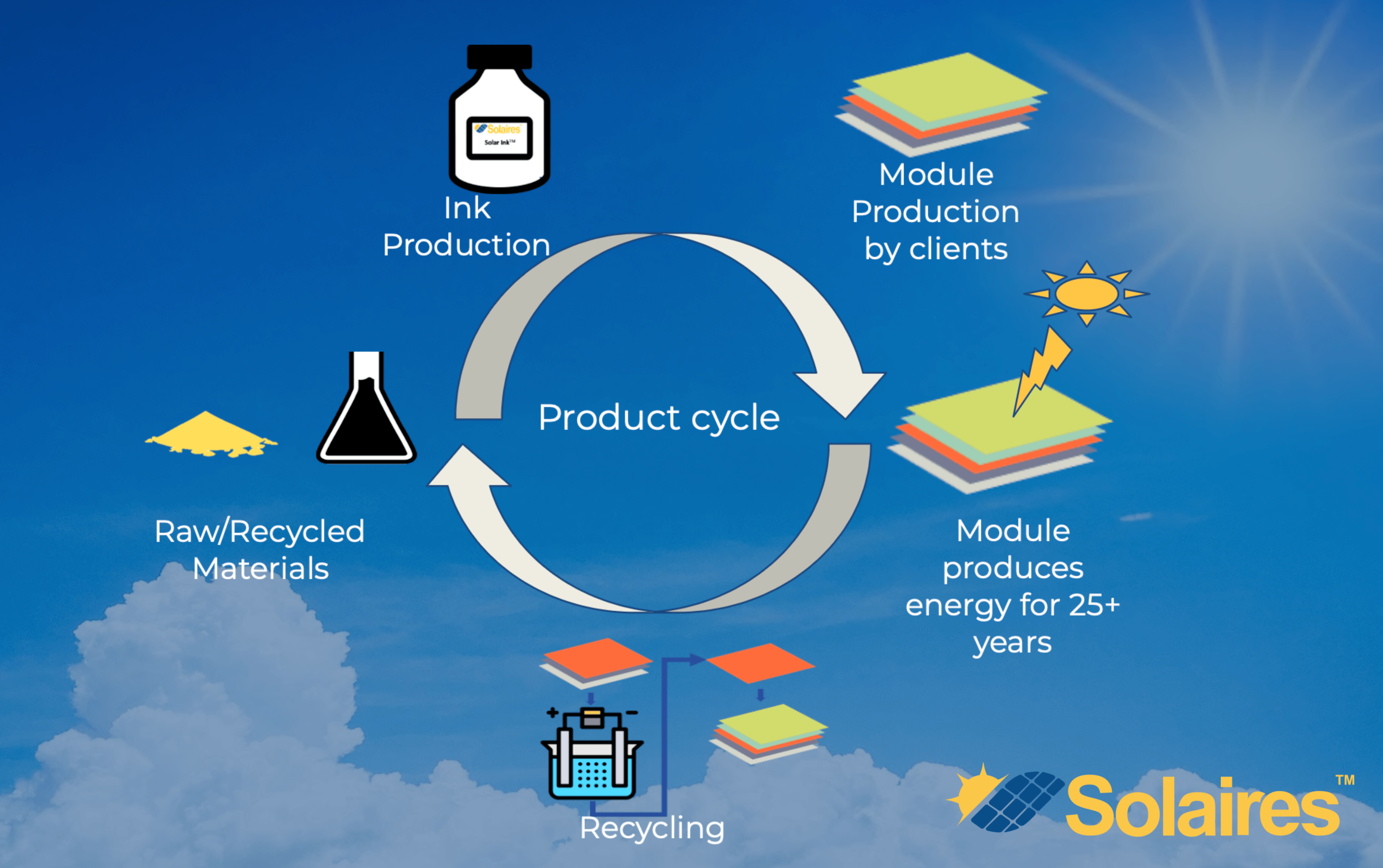HOW GREEN IS SOLAR ENERGY ?
The Environmental Implications of Photovoltaics
Solaires Team | Victoria, B.C. | August 2021
Photovoltaics (PVs) are progressing fast. Meanwhile, population and economic growth have led to a rapidly increasing global demand for energy. To address the increasing scarcity of fossil fuels, extensive research efforts and developments are made towards building a sustainable energy future, a greener growth model. Among the wide array of renewable energy resources and technologies, perovskite solar cells are the latest technology breakthrough in solar energy due to their potential for a low economical cost, low environmental impact, and high performance. Perovskites are a family of solution-processable ternary semiconductors with exceptional optoelectronic properties, including high absorption coefficient, bandgap tunability, and long carrier diffusion length. The semiconductor can be fabricated from a solution, like Solaires’ Solar Ink™ , a characteristic enabling low cost and fast production.
Using solar power reduces the amount of carbon dioxide, nitrous oxide, and other pollutants that are emitted into the environment by other conventional forms of energy. Comparatively, it is cleaner because it replaces or reduces the use of other energy sources that have larger effects on the environment. However, solar power is not without its environmental implications:
-
Toxicity
All photovoltaic (PV) cells contain a certain amount of toxic substances. The evaluation of environmental and human health impacts is an important prerequisite when commercialising new solar technologies. For example, the commercialization of perovskite solar cells (PSCs) comes with some concerns about their safety, since their most effective and long-living PSCs contain lead compounds in their light-harvesting active layer. The use of toxic metals, and disposal considerations cause concerns about the environmental impact of photovoltaics. There are non-negligible hazard possibilities with photovoltaics and its degradation products. Caution must be taken in the mass production of PVs for the sustainable development of clean solar energy technology.
-
Land Use
Generating electricity at a utility-scale requires solar energy facilities to take over large areas of land for energy collection. These facilities may require the land to be cleared, interfering with existing land use which may involve removing crucial sources of biodiversity and natural habitats. Perovskite solar technology paves the way toward the potential for flexible and lightweight applications that will not require large land use, and can supplement existing land use where heavy and rigid traditional photovoltaics are impractical.
-
End-of-life Treatment: Recyclability
While solar energy is a clean and renewable resource, this will only remain true if the technology is manufactured sustainably and can be recycled. Many countries are not equipped to recycle metals and minerals properly, let alone during the massive boom which the energy transition demands. Recycling is challenging. It is difficult to separate raw materials and the rare and valuable materials in the modules. The failure to reclaim these materials through recycling contributes to resource depletion. There needs to be accountability when devices reach end-of-life by establishing cleaner routes of production avoiding toxic solvents and recycling programs for consumers to properly dispose of modules.
In an article published in ScienceAdvances , life cycle assessments were performed for perovskite-perovskite tandem PVs and were benchmarked against state-of-the-art commercial silicon cells:
“The resulting energy payback time and greenhouse gas emission factor of the all-perovskite tandem configuration are 0.35 years and 10.7 g CO2-eq/kWh, respectively, compared to 1.52 years and 24.6 g CO2-eq/kWh for the silicon benchmark. Prolonging the lifetime provides a strong technological lever for reducing the carbon footprint such that the perovskite-silicon tandem can outcompete the current benchmark on energy and environmental performance. Perovskite-perovskite tandems with flexible and lightweight form factors further improve the energy and environmental performance by around 6% and thus enhance the potential for large-scale, sustainable deployment.”
Solaires has developed mixed organic-inorganic perovskite solar cells to achieve maximum efficiency and high stability. To fabricate our PSCs, Solaires uses different raw materials in conjunction with a more sustainable manufacturing process.
Solaires envisions a circular economy model which enables recycled materials in our manufacturing process. Our vision of perovskite solar technology is “double green,” both serving as a source of renewable energy generation and is reused after their life cycle ends. Meanwhile, we are creating a solution to increase the stability and energy conversion efficiency of perovskite solar cells to extend those lifetime and delay the need for recycling.

Basic science discoveries, intellectual property, and knowledge from our research could lead to innovations in nanotechnology that may increase the effectiveness of solar panels. There is already a scientific roadmap to double solar power systems’ electrical input, which would vault Canada into becoming a clean and green energy superpower.